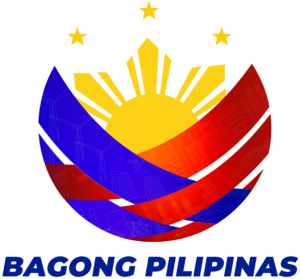By: Reymann L. Guevarra
“And holding up this flag of ours, I present it to the gentlemen here assembled, who solemnly swear to recognize and defend it unto the last drop of their blood.”[1] This is an excerpt of the Act of Declaration of Philippine Independence in 1898. At the end of this important document are the signatures of 98 witnesses, one of them was Don Anastasio J. Pinzón.
The document was signed on June 12,1898 at the residence of General Emilio Aguinaldo in Cavite-Viejo, now Kawit, Cavite. General Aguinaldo declared Philippine Independence from more than 300 years of Spanish colonization, the first colonized nation in Asia to declare its independence and establish its own government, known in history as the First Philippine Republic.
Who is Don Anastasio J. Pinzón? Copy of his school records at the University of Santo Tomas provide a picture of his educational background. A translation of his 1875 record reads: “He has duly proven that he meets the requirements prescribed by current legislation to obtain the Bachelor of Arts degree and has demonstrated his proficiency before the secondary education examination board on October 31 of the current year, having obtained an outstanding grade (sobresaliente).” It was signed by Fr. Benio Corominas, O.P., the university Rector, and Antonio Estrada, the Secretary General at that time. This is also recorded in the UST Alumni Directory published in 1972 which mentions that Pinzon graduated in 1875 with a Bachiller en Derecho Civil[2]. His record of March 12, 1888, cites that he completed his Titulo de Profesor de los dos años de 2ª enseñanza from the same university, with a calificación of “Aprobado” (passing grade), was signed by Fr. Gregorio Echevarria, O.P., the UST Rector in 1888, and Lic. Blas C. Alcuaz, the Secretary General.
Pinzon was from the pueblo of San Roque (now Cavite City).[3] In 1903, the town of San Roque, was merged with the towns of Puerto de Cavite, and Caridad as the Municipality of Cavite. It became a city on May 26, 1940 by virtue of Commonwealth Act No. 47.[4]
Prior to the declaration of Philippine Independence, Pinzon was a teacher at a Escuela Privada de Latinidad at the pueblo of San Roque, Cavite Province, teaching subjects in the first two years of segunda enseñanza (secondary education).[5]
Don Anastasio Pinzon was mentioned as one of the lawyers who was carefully considered for appointment as one of the magistrates at the Audiencia, a Filipino judiciary established by Aguinaldo as part of his broader aspiration for independence and self-governance.[6]
On 1 August 1901, he served in the provincial government of Cavite as Justice of the Peace of the town of Cavite.[7] He was appointed as a third member of the Cavite provincial board on September 17, 1907,[8] and as a notary public of the Municipality of Cavite.[9]


[1] An excerpt of the English translation of the Acta de la Proclamacion de Independencia del Pueblo Filipino translated by Sulpicio Guevara.[2] University of Santo Tomas Alumni Directory, 1611–1971 (Manila: U.S.T. Alumni Association, Inc., University of Santo Tomas, 1972), 14-C
[3] Anastasio Pinzon y Jose, “Título de Profesor de los dos años de 2ª enseñanza,” Universidad de Santo Tomas de Manila, 1888.
[4] The History and Cultural Life of Cavite Province (S.l.: MEC, Division of Cavite and Cavite Provincial Government, 1981), 186
[5] Lorenzo G. Sempere, Discurso Leido En La Apertura Anual De Los Estudios De La Real Y Pontificia Universidad De Sto. Tomas De Manila, El Dia 2 De Julio 1895. Edicion Oficial (Manila: Establecimiento Tipografico del Colegio de Sto. Tomas, 1895), xxx
[6] The Letters of Apolinario Mabini (Manila: National Heroes Commission, 1965), 141
[7] Annual Reports of the War Department for the Fiscal Year Ended June 30, 1904, Volume XIV, (Washington: Government Printing Office, 1904), 531
[8] Official Roster of Officers and Employees in the Civil Service of the Philippine Islands, Government of the Philippine Islands, Bureau of Civil Service, January 1, 1908 (Manila: Bureau of Printing, 1908), 95
[9] War Department, U.S.A. Annual Reports, 1907, (In Ten Volumes), Volume X, Acts of the Philippine Commission, Nos. 1539-1800, inclusive, Public Resolutions, Etc., from September 16, 1906 to October 31, 1907 (Washington: Government Printing Office, 1907), 606

